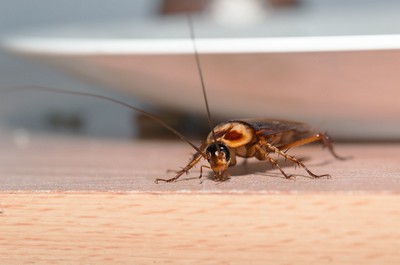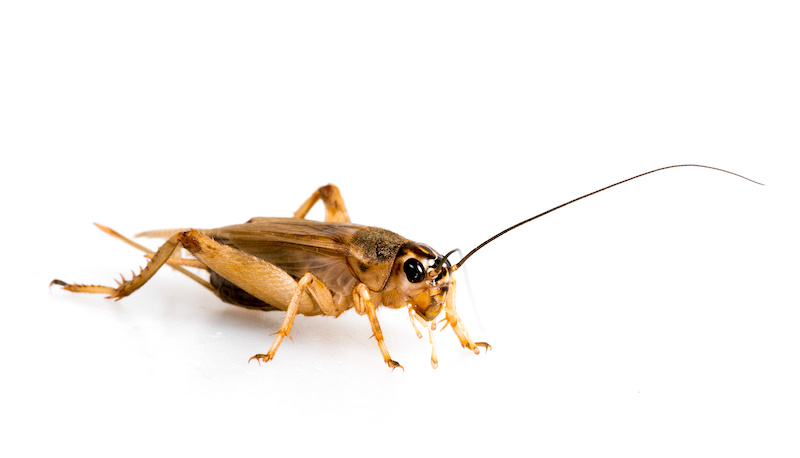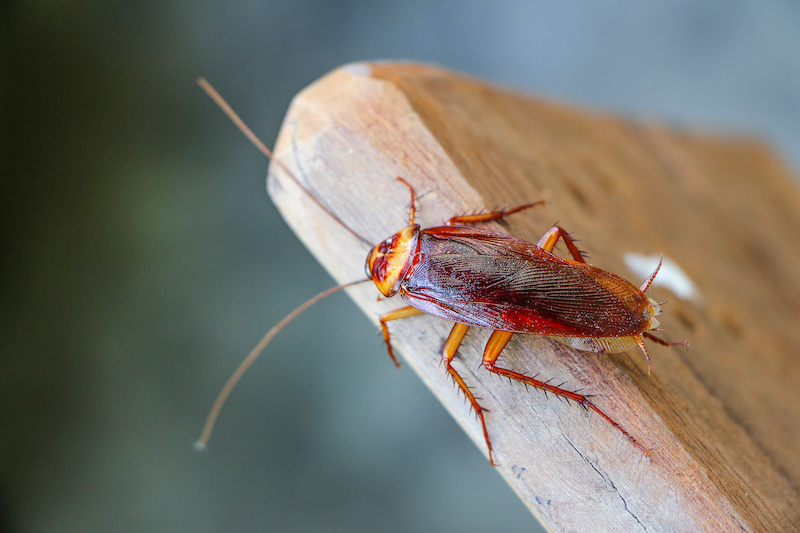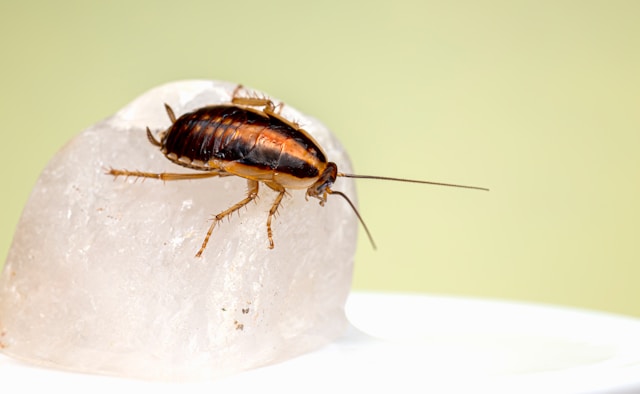Table of Contents

If you’re fortunate enough to have avoided close encounters with roaches and crickets, you might struggle to tell the difference between these common household pests. While they can be easily confused, some distinct characteristics set them apart.
Recognizing the pests you’re dealing with is crucial for effective prevention and control. At RECON Pest Services, we’re experts in cricket and roach pest control and are here to help you identify and tackle these unwanted guests.
So, let’s dive in and learn how to distinguish between crickets and roaches. If you need professional cricket or roach control in the Omaha or Lincoln areas, don’t hesitate to give us a call!
Differences Between Crickets and Roaches
Crickets and roaches may share a handful of anatomical similarities, but they belong to totally different insect families. Crickets are part of the Gryllidae family, while roaches are part of the Blattidae family. You’ll see that the main differences between these pests lay within their physical characteristics, like their color, size, and shape.
Physical Characteristics of Crickets
Crickets only usually measure between 1 and 2 inches in length, making them notably shorter than most of the larger species of roach, like American roaches. With long antennae and cylindrical bodies, their legs tend to fold together in ways that would be impossible for cockroaches.

Crickets are agile creatures able to jump many times their height. They are known for their memorable chirping sound, produced by rubbing their little wings together. Their narrow, translucent wings lie flat on their backs when at rest. Crickets come in various colors, including brown, black, and green, depending on the species.
Fortunately, they are much less likely to carry disease and filth than cockroaches. Some cultures even eat fried crickets as a delicacy!
Physical Characteristics of Roaches
Roaches, on the other hand, are usually larger than crickets, with an average length ranging from 0.5 to 2 inches. They have long antennae and flat, oval-shaped bodies. Unlike crickets, roaches do not have wings that produce sound. Instead, they emit a hissing noise when threatened or disturbed.
Some roaches can fly, but not all. Roaches are typically brown or black and may have a shiny or matte appearance, depending on the species. Unlike crickets, roaches very rarely, if ever, come in green.
Behavior and Habits of Crickets
Crickets are nocturnal insects, meaning they are most active during the night. They are commonly found in outdoor environments such as gardens, fields, and wooded areas. Crickets are omnivorous and feed on a variety of organic matter, including plants, insects, and decaying material.
They are known for their hopping ability and are agile jumpers. Crickets are attracted to light sources and may accidentally enter homes or buildings.
Behavior and Habits of Roaches
Roaches are incredibly adaptable and enduring pests that are quite hard to kill. They are nocturnal critters, meaning that they prefer the night shift to the sunlight. However, if there is a large enough group of roaches, you might find some at night, as all the best hiding places are already taken.
These pests prefer warm and humid conditions, making kitchens, bathrooms, and basements common infestation sites during the summer. They are also some of the least picky animals known to man, eating basically anything that they can scavenge (ie. plant waste, dead animals, food scraps, mold, and more).
Plus, roaches are known for their ability to hide in narrow cracks and crevices, making them difficult to eradicate without access to the tools.
Signs of an Infestation: Cricket vs Roach
Identifying the signs of a cricket or roach infestation is crucial in implementing effective control methods. For crickets, one of the most obvious signs is their distinctive chirping sound, which males produce to attract females.
Additionally, cricket droppings, which resemble small black pellets, can be found near their hiding spots. Damage to plants and crops can also indicate a cricket infestation.

Roaches, on the other hand, leave behind several telltale signs. These include droppings that resemble small, dark smears or cylindrical pellets. Roach egg cases, called oothecae, can also be found in infested areas.
Another sign is a musty or oily odor, which roaches emit when their population is high. Additionally, seeing live roaches, especially during the day, is a clear indication of an infestation.
Cricket Control in Nebraska
If you’ve spotted crickets inside your home, it is essential to eliminate their potential access points. Seal any cracks or openings in windows, doors, and foundations. Reduce outdoor lighting, as crickets are attracted to bright lights. Keep your yard well-maintained by regularly mowing the lawn and removing debris. If necessary, consider using insecticides labeled for cricket control, following the instructions carefully.
Roach Control in Nebraska
Preventing Nebraska roach infestations requires a combination of sanitation and exclusion measures. Keep your home clean and free of food debris, taking extra care in the kitchen and dining areas. Store food in sealed containers and promptly clean up any spills or crumbs.
Seal cracks and openings in walls, floors, and pipes to prevent roaches from entering your home. If an infestation occurs, use baits, traps, or insecticides specifically designed for roach control.
Pest Control for Crickets & Roaches in Douglas & Lincoln County
Can pest control get rid of crickets or roaches? Of course, it can!
If you are unsure about the type of pest you are dealing with, it is always best to consult a professional pest control service. RECON Pest Services is here to help you keep crickets and roaches out of your home and garden.
Douglas and Lincoln County residents, contact us today for a free pest control quote and sign up for our roach or cricket treatments!






